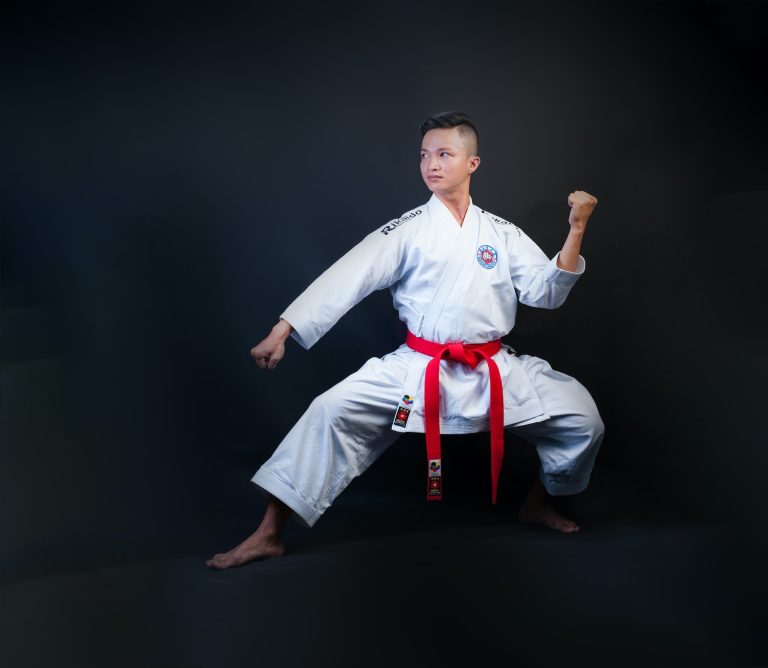Understanding Karate Scoring System: Everything You Need to Know
Karate is a popular martial art that requires a lot of practice, strength, and discipline. It originated in Japan and is now practiced all around the world. In karate tournaments, the competitors aim to showcase their skills and techniques, with the art of scoring serving as the fundamental aspect of the sport.
The karate scoring system is one of the most important aspects of the sport. It consists of a set of rules and regulations that ensure a fair and just assessment of the performance of the athletes. The scoring system in karate is simple yet effective – points are awarded for landing a successful strike on the body of the opponent.
Here is a detailed explanation of how the karate scoring system works:
Basic Rules of Karate Scoring System
In karate, each strike is assessed based on the following factors:
– Zanshin – remain alert
– Kiai – energy release
– Kime – focus on technique
– Maai – proper distance
– Taisabaki – Body movement
– Shisei – Posture
– Chakugan – Eye contact
– Metsuke – Focus on target
The judges look at each of the above aspects of a participant’s performance to assess their overall score. Once the match has started, scoring is done on the basis of the following criteria:
Points System
The karate scoring system awards points on the basis of where the strike lands on the body of the opponent. The different types of striking techniques are assigned varying degrees of points for their effectiveness in a sparring match.
Here’s a breakdown of the number of points each strike can earn:
– Ippon – awarded for any clean and decisive strike that sends the opponent down to the floor. It is the highest point given in karate and is equal to three points.
– Waza-ari – awarded for a less powerful strike, where the opponent falls to the floor or shows significant disorientation. It is worth two points.
– Yuko – awarded for a less significant or glancing strike that does not cause the opponent to fall entirely to the floor. It’s worth one point.
It is essential to remember that for a strike to count, it should land on the specified target areas. For example, a strike to the head or neck area will not count as a score in some karate tournaments.
How is the Winner determined?
The winner of a karate tournament is determined based on the number of points scored during the match. If the scoreboard is tied at the end, the judges use their judgment to award a winner based on the quality of the techniques used in the fight.
There is no overtime or extra time in Karate tournaments; hence, the judges‘ decisions are final.
Fouls and Penalties in Karate Scoring System
In Karate, fouls are given for rule violations by the participant. Here are some of the most common fouls that result in point deductions:
– Excessive contact – the blow was too hard or missed the target entirely
– Punch to the face
– Blocked kick/strike
– Grabbing the opponent’s gi or using unauthorized parts of the body to strike.
Participants who commit fouls will face a point deduction or a warning. In cases of repeated poor performances, the player may be disqualified from the tournament.
How Does Karate Scoring Work – Answering the Most Common Questions
If you’re new to karate or just learning more about how the scoring system works, it can be confusing. Scoring in karate is based on a combination of factors, including technique, form, and timing. In this blog post, we’ll answer some of the most common questions about how karate scoring works to help you better understand this exciting sport.
What are the basic rules of karate scoring?
The basic rules of karate scoring are simple. A competitor scores points by landing a clean technique on their opponent’s body. The techniques allowed in karate competitions include punches, kicks, and strikes using the hands, feet, knees, and elbows. Points are only awarded for techniques that are delivered with correct form, strength, and timing, and that land on the designated scoring areas.
What are the scoring areas in karate?
The scoring area in karate is based upon two fundamental criteria: the striking area and the target area. The striking area refers to the placement on the body where the attack must make contact, and the target area describes the techniques and body parts that can be used to make an attack. The most common scoring areas in karate include the head (face and neck), torso (chest and abdomen), arms, and legs.
How are points awarded in karate?
Points in karate are awarded based on a combination of factors like timing, strength, and form. The number of points awarded varies based on the technique used, the location of the strike, and the type of competition. Common scoring methods include:
- Ippon: awarded for a clean, decisive strike or kick to the head, neck, or torso that shows complete control
- Waza-ari: awarded for a technique that is not as decisive as an Ippon, but still shows good form and control
- Yuko: awarded for a technique that is successful but not as clean or forceful as an Ippon or Waza-ari
- Koka: the lowest point value, awarded for a technique that is successful with minimal impact and control
What is the role of judges in karate scoring?
Judges in karate competitions are responsible for awarding points to the competitors based on the quality of their techniques. They observe the performances carefully and determine the type and value of the points based on the criteria specified by the competition rules. In some cases, a video review system is also used to verify any disputed calls.
What are some common fouls in karate competitions?
Common fouls in karate competitions include:
- Excessive Contact: Deliberate or excessive contact made during an unfair attempt to injure an opponent beyond the point designated for that specific scoring technique.
- Attack Below the Belt: An attack that is below the opponent’s hip is considered a foul.
- Grabbing: Grabbing the opponent’s uniform, limbs or any other part of the body is considered a foul.
- Attacking After Referee’s Call: If a competitor delivers an attack after the referee has called for a break, it is considered a foul as it can result in a serious injury to an unprepared opponent.
How Does Karate Scoring Work?
If you are new to Karate, the scoring system may seem confusing at first. However, once you understand how Karate scoring works, you will be able to follow along and appreciate the sport better. In this guide, we will provide you with a detailed explanation of how Karate scoring works.
The Match
A Karate match typically lasts between 2-3 minutes, depending on the level of competition. At elite levels, the match may consist of three rounds of two minutes each, with a one-minute break between rounds.
Points
The goal of Karate is to score points by landing strikes and kicks to the opponent’s designated target areas. Points are awarded based on the following criteria:
Clean Strikes
Clean Strikes are when a competitor lands a punch or kick to the body or head of their opponent. Points are awarded for these strikes based on the following criteria:
- One Point: Punch to the Body
- Two Points: Kick to the Body
- Three Points: Kick to the head
Takedown
In addition to Clean Strikes, a competitor can also receive a point for a Takedown, which is when they take down their opponent to the mat. A Takedown is worth one point.
Penalties and Disqualifications
Penalties and Disqualifications can result in the deduction of points or the disqualification of a competitor. These include:
- Chukoku: Warning
- Keikoku: Deduction of one point
- Hansoku: Disqualification
Equipment
To ensure fair competition, Karate competitors must wear protective gear that includes:
- Chest protector
- Groin protector (male)
- Mouthguard
- Headgear
- Hand and foot protectors
- Shin pads
- Arm protectors (optional)
Judging
In Karate, there are three judges who score each match. The judges observe and award points based on the criteria discussed earlier. The competitor with the most points at the end of the match is declared the winner. In the event of a tie, an overtime period is added to determine the winner.
Conclusion
Understanding Karate scoring can enhance your experience while watching or participating in the sport. By recognizing the target areas, different types of strikes, penalties, and equipment, you can better appreciate the skill and technique required to compete in Karate. We hope this guide has provided you with a clear and informative explanation of how Karate scoring works.
Inhaltsverzeichnis






